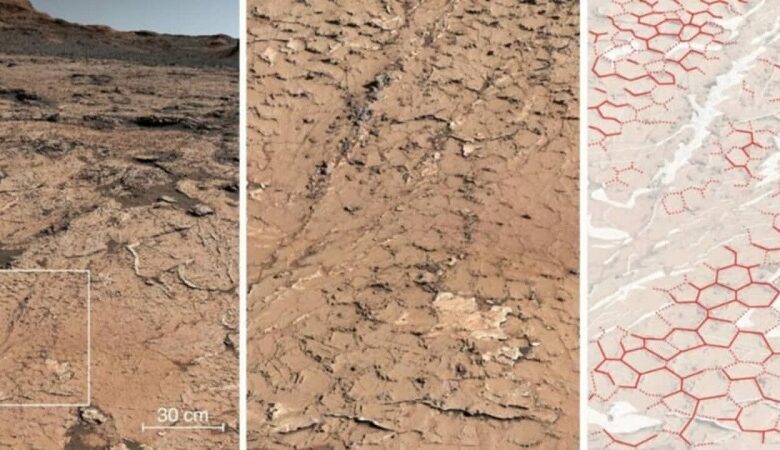Unveiling Mars’ Watery Past: Mud Cracks Suggest Cycles of Habitability

Mars, the enigmatic red planet, might have experienced alternating dry and wet seasons in its past, possibly rendering it habitable at some point, as indicated by scientists’ recent findings.
The investigation of mud crack patterns on the early Martian surface, meticulously observed by NASA’s Curiosity Rover, has led researchers to propose the presence of water in an irregular or episodic manner. This implies that water could have existed on Mars for certain periods before evaporating.
The process, the scientists from France, the United States, and Canada explain, might have undergone repetition until mud cracks emerged. In their study, the team elucidates that “these exciting observations of mature mud cracks are allowing us to fill in some of the missing history of water on Mars. How did Mars go from a warm, wet planet to the cold, dry place we know today? These mud cracks show us that transitional time, when liquid water was less abundant but still active on the Martian surface,” shared Nina Lanza, a study author and principal investigator of the ChemCam instrument onboard the Curiosity Rover.
Interestingly, mud cracks on Earth tend to initially appear in a T-shape. Subsequent cycles of wetting and drying can lead them to take on more of a Y-shape. On Mars, the presence of Y-shaped mud cracks points to possible wet-dry cycles, as highlighted in the study published in the journal Nature.
Moreover, the depth of these cracks was only a few centimetres, indicating that the wet-dry cycles on Mars could have been seasonal or could have occurred more rapidly, perhaps through events like flash floods. These revelations spark the notion that Mars might have once harboured Earth-like wet climatic conditions, making it a potential environment capable of supporting life.
The study’s co-author, Patrick Gasda, noted, “(The wet-dry cycles create) the perfect place for the formation of polymeric molecules required for life, including proteins and RNA, if the right organic molecules were present at this location.” He further explained, “Wet periods bring molecules together while dry periods drive reactions to form polymers. When these processes occur repeatedly at the same location, the chance increases that more complex molecules formed there.”
Overall, these findings provide intriguing insights into Mars’ history as a potentially habitable world. Lanza summarized, “These features point to the existence of wet-dry environments that on Earth are extremely conducive to the development of organic molecules and potentially life. Taken as a whole, these results give us a clearer picture of Mars as a habitable world.”
News Mania Desk / Agnibeena Ghosh 11th August 2023






